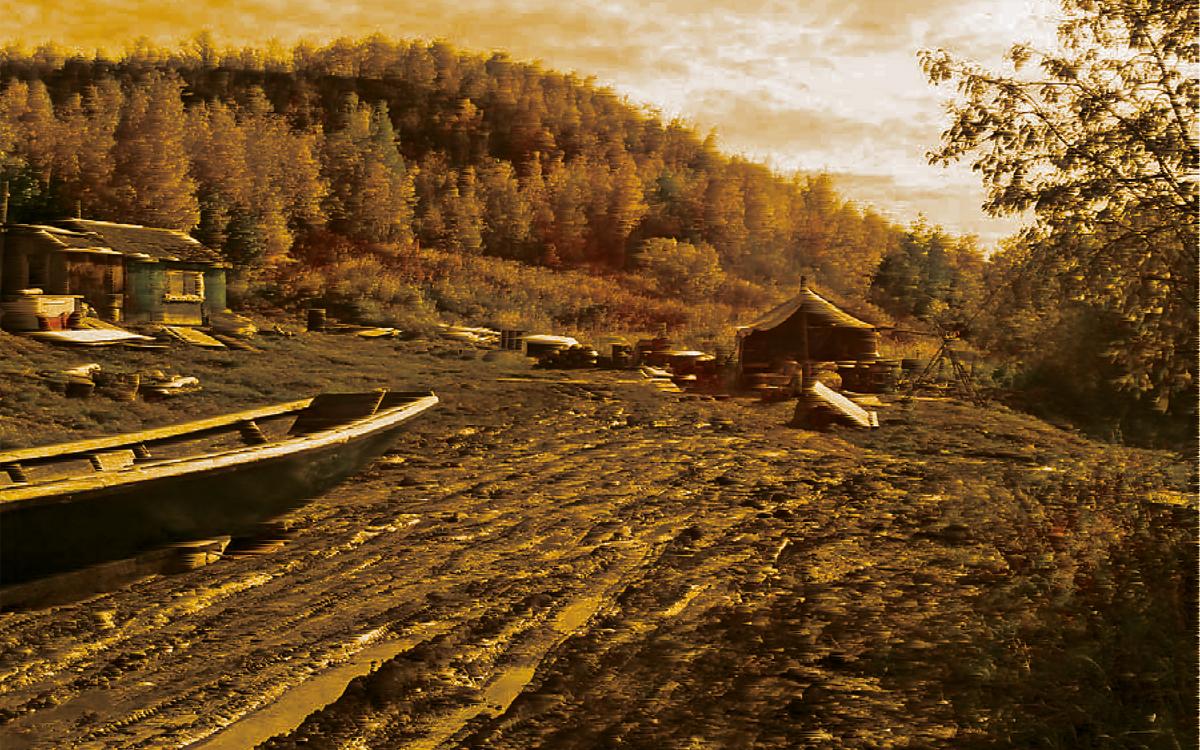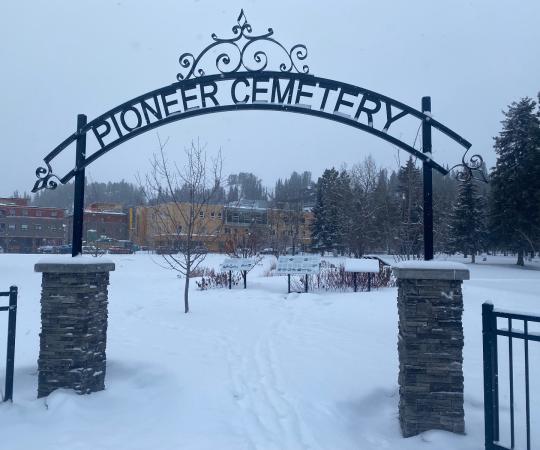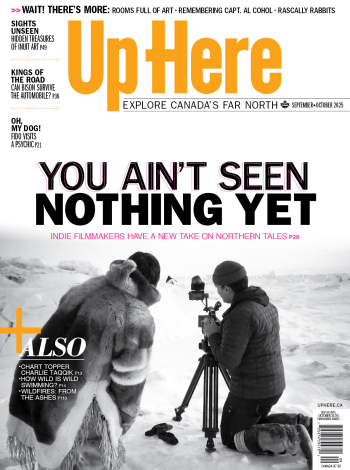There is a spot along the Peel River just south of Fort McPherson, NWT, where history is alive. Today, many Teetl’it Gwich’in elders live at a place commonly called Eight Miles because of its proximity to McPherson. There are cabins on both sides of the river, and shacks for smoking fish. People live off the land, as their ancestors did, while staying a comfortable distance from town. It’s been a peaceful, steadily growing fishing village for over 100 years. But the history is not all above ground. Buried arrowheads and oral tradition belie the idyllic setting, because Nataiinlaii—as it’s called in Gwich’in, meaning “water flowing out from all directions”—has been the site of much violence and bloodshed.
Not too long before the first shacks went up, this site was a buffer area between the Gwich’in, who hunted in the mountains in the winter and fished along the Peel in the summer, and their Inuvialuit neighbours, the Siglit, who lived along the Arctic coast and pulled their food from the sea. For a long time, if either of them entered the 130 square kilometres of No Man’s Land, they were likely to violently raid the offender’s territory.
“It was said that there was a wide sandbar at the mouth of Nataiinlaii in those days,” said Eunice Mitchell in a story recorded as part of the Teetl’it Gwich’in Place Names Project in 2001. Her grandmother had told it to her. “The Gwich’in people would send one of the men down the creek to the river to check if the Eneekaii [Siglit] were coming ... They sent one man down the creek. He landed on the way, pulled his canoe up on to the shore and hid it away in the bushes. He sat and watched for a while and saw two Eneekaii men paddling up the creek. After they passed by, he walked over the hill to the riverbank and looked out. From the hill looking over the river he could see that there were many round houses on the sandbar and that there was a large group of Eneekaii there. They came to have war with the Gwich’in people.”
"Every spring, right after break-up, thousands of Eskimos would paddle their kayaks from the area of [Tuktoyaktuk] all the way down to here. They would start war. The Indians, of course, were always ready.”
Her story goes on to tell of the battle. The Gwich’in men went to the Siglit camp and one man, Dzhiivah’inh’ (after whom a road in Fort McPherson is named) drew first blood in a massacre of the camp. His pregnant wife had been murdered in a previous battle, and her murderers had held his unborn child up at him, taunting him. They left alive two of the Siglit, who paddled away back to their people in tears at the blood that was shed.
And so went many of the battles, according to oral tradition among the Gwich’in: the Gwich’in would ambush the Siglit and send a few survivors back to tell the tale, though there are also stories of the Siglit successfully ambushing the Gwich’in. “Every spring, right after break-up, thousands of Eskimos would paddle their kayaks from the area of [Tuktoyaktuk] all the way down to here,” says Lucy Vaneltsi in a story recorded as part of the Committee for Original Peoples Entitlement collection. “They would start war. The Indians, of course, were always ready.”
There are various stories among the Gwich’in for how the conflict between the two peoples began, and some hint at an intimate relationship between the peoples beforehand that was ruined by “a contest of hunting magic between a [Gwich’in] and his Eskimo trading-partner,” “the defrauding of an Eskimo in trade by a [Gwich’in]” or “the ravishing of a [Gwich’in] girl by an Eskimo” wrote anthropologist Richard Slobodin in a 1962 study.
In 1840, the Hudson’s Bay Company set up a trading post in the middle of this zone, at Fort McPherson, hoping to trade with both the Siglit and Gwich’in. The post recorded seven major battles between the peoples over the next 16 years. But then the tensions began to ease: the Gwich’in population underwent terrible losses from epidemic diseases, the trade of muskrat furs with the HBC became an important facet of life for both peoples, and Christian missionaries arrived. Mitchell said her story of the battle led by Dzhiivah’inh’ took place in the last war between the Gwich’in and the Siglit.
Mitchell attributed the cessation of hostilities to the missionaries. “The ministers came and taught our people about God and everything was peaceful and there were no more wars.” Vaneltsi says the Gwich’in and the Siglit agreed there would be no more fighting after a devastating ambush of a Siglit campsite. Anthropologist Shepard Krech credits the muskrat trade with helping pacify relations. Whatever the reason, two peoples who warred viciously against each other just 200 years ago now live amongst each other. It is recorded that after World War One, the Gwich’in and Siglit were camping together at Fort McPherson in the summers. “In the early days the Eneekaii and Indians didn’t like each other,” said Mitchell. “Today I have an Eneekaii son-in-law.”
Nataiinlaii, now a territorial historic site, has changed from a place of war to one of peace, where smoke billows lazily from fish shacks as elders live quiet lives away from the hustle and bustle of townlife.
Many thanks to Ingrid Kritsch and the Gwich’in Social and Cultural Institute for collecting and sharing their historical research with Up Here.










